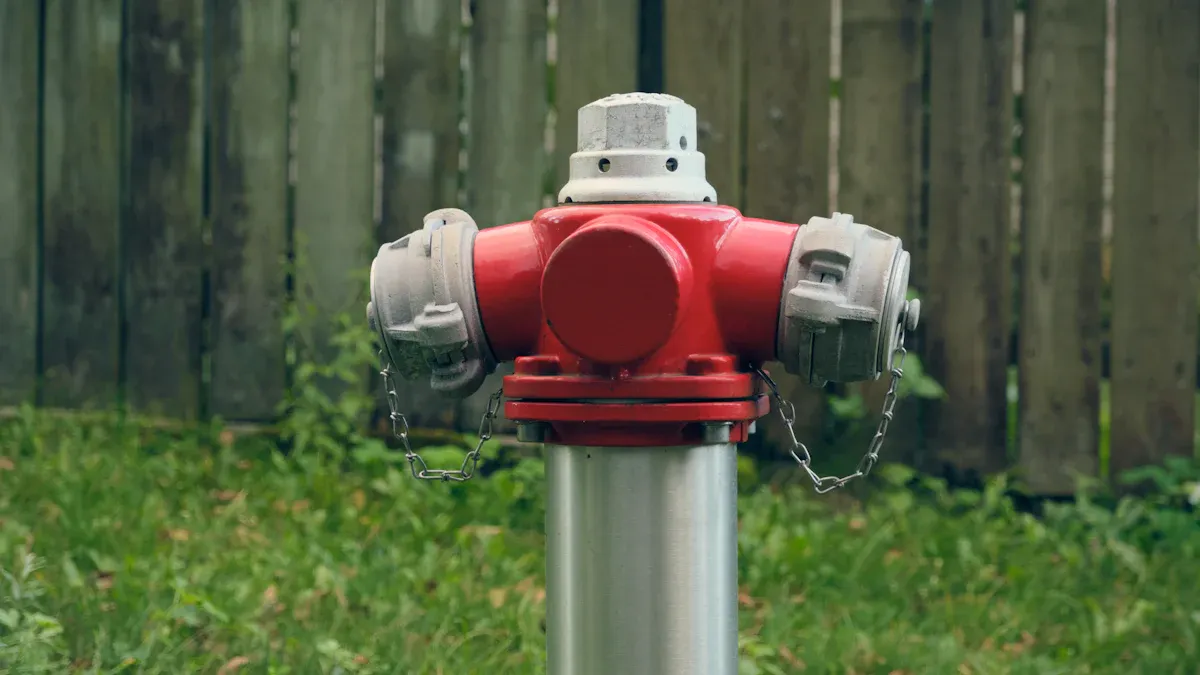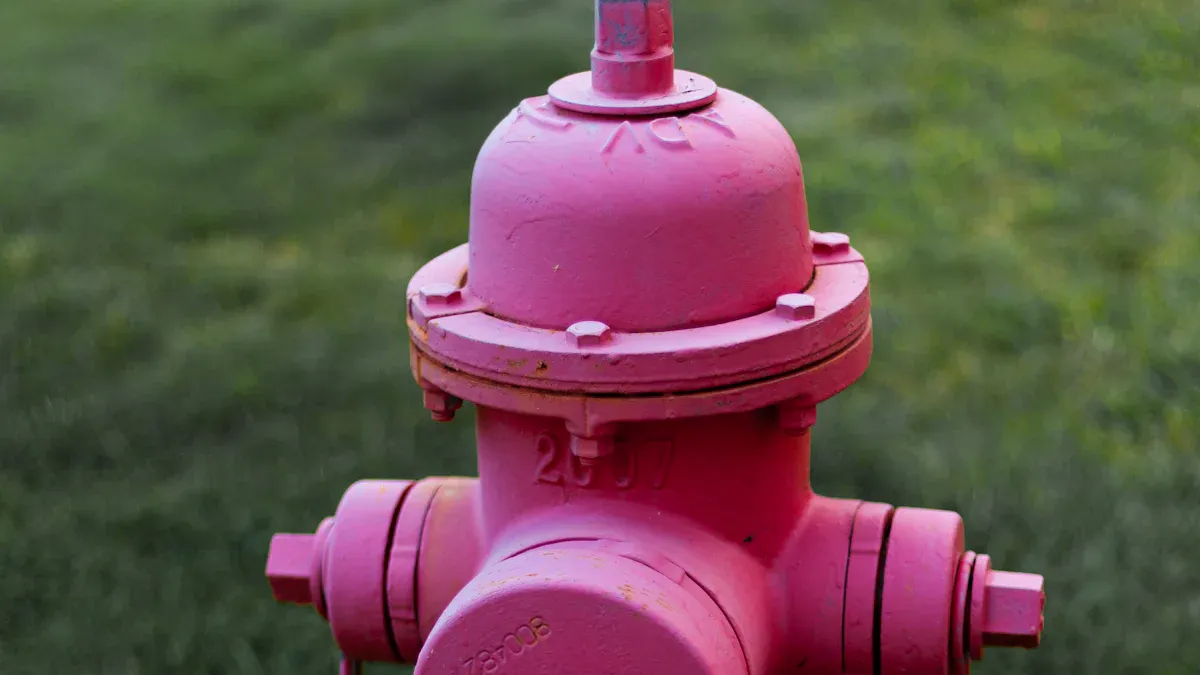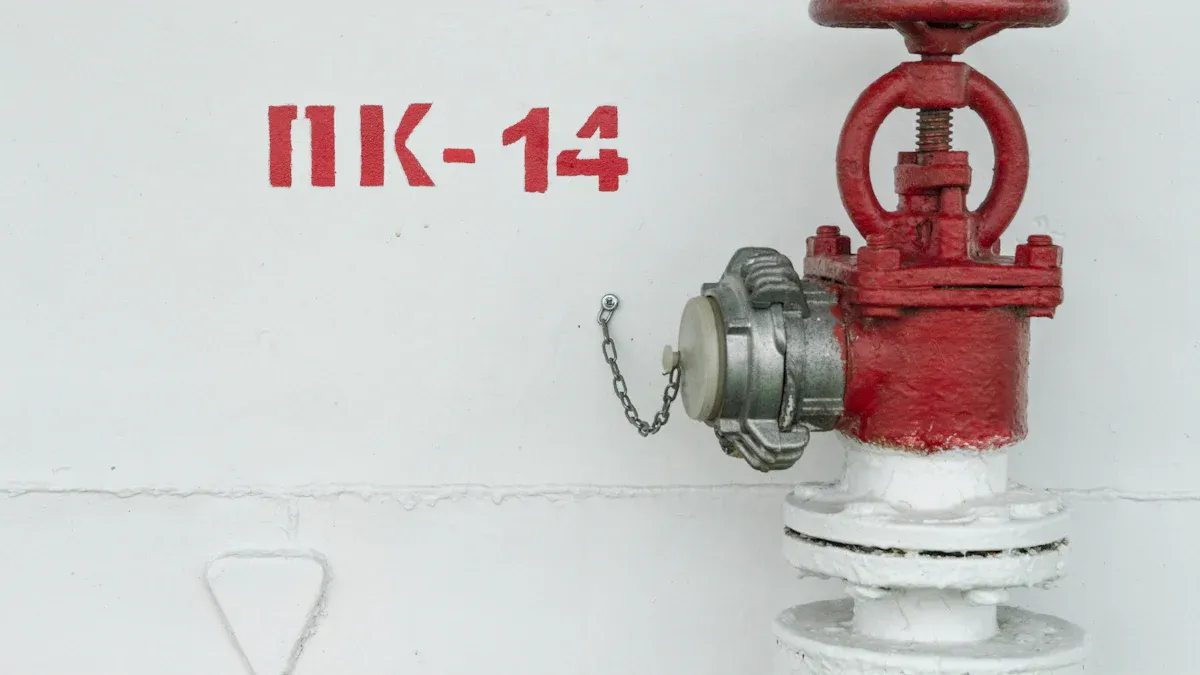
A Fire Hydrant Valve serves as a critical component in fire safety systems. It controls water flow from the hydrant to the fire hose during emergencies. Understanding its features helps ensure quick response and reliable performance.
Proper knowledge of fire hydrant valves can make a difference during urgent situations.
Key Takeaways
- Fire hydrant valves control water flow and pressure, helping firefighters deliver water efficiently and safely during emergencies.
- Different types of valves, like globe, gate, angle, and dry barrel, offer specific benefits such as precise flow control, quick water release, space-saving design, and freeze protection.
- Following safety standards and regular maintenance ensures valves work reliably, protecting lives, property, and community water resources.
Main Functions and Key Features of Fire Hydrant Valve

Flow Control
A Fire Hydrant Valve allows firefighters to manage the flow of water during emergencies. They can open or close the valve to start or stop water movement. This control helps direct water exactly where it is needed. Firefighters rely on this feature to put out fires quickly.
Tip: Proper flow control can make firefighting more effective and reduce water waste.
Pressure Regulation
Pressure regulation stands as a key feature of every Fire Hydrant Valve. These valves help maintain steady water pressure in the hose. If the pressure gets too high, hoses or equipment may break. If the pressure drops too low, water may not reach the fire. The valve ensures the right balance for safe and efficient firefighting.
| Feature | Benefit |
|---|---|
| Pressure Control | Prevents hose damage |
| Steady Flow | Ensures water reaches the fire |
Water Conservation
Fire Hydrant Valves help conserve water during fire emergencies. By controlling the amount of water released, they prevent unnecessary waste. Firefighters can use only the water they need. This feature protects local water supplies and supports environmental safety.
- Reduces water loss
- Supports sustainable firefighting
- Protects community resources
Durability and Maintenance
Manufacturers design Fire Hydrant Valves to last through harsh conditions. They use strong materials like brass or stainless steel. These valves resist rust and damage from weather. Regular maintenance keeps them working well. Simple checks and cleaning help prevent problems during emergencies.
Note: Routine inspections ensure the Fire Hydrant Valve stays reliable and ready for use.
Types of Fire Hydrant Valve

Globe Valves
Globe valves use a spherical body shape. They control water flow by moving a disc up and down inside the valve. This design allows precise flow adjustment. Firefighters often choose globe valves when they need to fine-tune water delivery. These valves work well in situations that require steady and controlled water pressure.
Note: Globe valves can handle high-pressure systems and offer reliable shut-off capabilities.
Gate Valves
Gate valves use a flat or wedge-shaped gate to block or allow water flow. When the gate lifts, water moves freely through the valve. When the gate lowers, it stops the flow completely. Gate valves provide minimal resistance when fully open. Fire safety systems often use these valves because they allow quick and full water release.
- Simple operation
- Low pressure drop
- Suitable for large water volumes
Angle Valves
Angle valves change the direction of water flow by 90 degrees. This design helps fit the Fire Hydrant Valve into tight spaces. Angle valves also make it easier to connect hoses in different directions. Many fire hydrant systems use angle valves for their flexibility and space-saving benefits.
| Feature | Benefit |
|---|---|
| 90° Flow Change | Fits in small locations |
| Easy Hose Hookup | Flexible installation |
Dry Barrel Valves
Dry barrel valves protect against freezing in cold climates. The main valve mechanism stays above ground, while the water remains below the frost line. When firefighters open the valve, water rises into the hydrant. This design prevents water from staying in the barrel and freezing. Dry barrel valves keep fire hydrants ready to use, even in winter.
Tip: Dry barrel valves are essential for regions with harsh winters.
Compliance and Safety Standards for Fire Hydrant Valve
Relevant Codes and Regulations
Many countries set strict rules for fire safety equipment. These rules help keep people and property safe. Fire hydrant valves must meet standards from groups like the National Fire Protection Association (NFPA) and the American Water Works Association (AWWA). Local governments may also have their own codes. These codes tell builders and engineers how to install and use fire hydrant valves.
Following these rules helps prevent accidents and ensures the system works during emergencies.
Importance of Certification
Certification proves that a fire hydrant valve meets safety and quality standards. Testing labs, such as Underwriters Laboratories (UL) or FM Approvals, check each valve. They look for leaks, strength, and proper function. Only certified valves can be used in many fire protection systems.
- Certified valves give peace of mind.
- They show that the product passed tough tests.
- Many insurance companies require certified equipment.
Impact on Safety and Performance
Proper compliance and certification improve safety. They make sure the fire hydrant valve works when needed. A certified valve will open and close without problems. It will not leak or break under pressure.
| Benefit | Result |
|---|---|
| Reliable operation | Faster emergency response |
| Fewer failures | Lower repair costs |
| Better performance | More lives and property saved |
Note: Regular checks and following standards keep fire safety systems strong.
A Fire Hydrant Valve provides essential flow control and durability for fire protection systems. Proper selection and compliance with safety standards ensure reliable operation. Firefighters depend on these valves to deliver water quickly. Their role in fire safety and system reliability remains critical for every community.
Tip: Regular inspections help maintain peak performance.
FAQ
What materials do manufacturers use for fire hydrant valves?
Manufacturers often use brass, stainless steel, or ductile iron. These materials resist corrosion and damage, ensuring long-lasting performance in harsh environments.
How often should fire hydrant valves receive maintenance?
Experts recommend inspecting and servicing fire hydrant valves at least once a year. Regular checks help prevent malfunctions and ensure reliable operation during emergencies.
Can fire hydrant valves be used in freezing temperatures?
Yes. Dry barrel valves protect against freezing. They keep water below ground until use, making them suitable for cold climates and winter conditions.
Post time: Jul-06-2025

